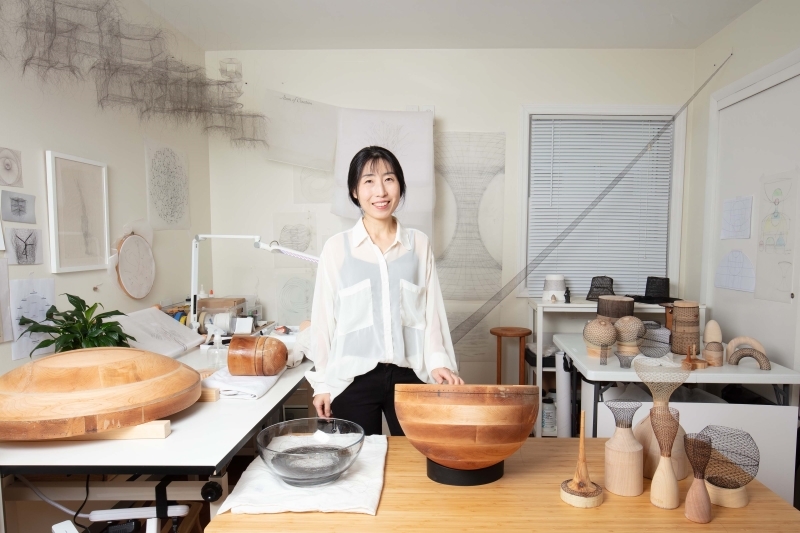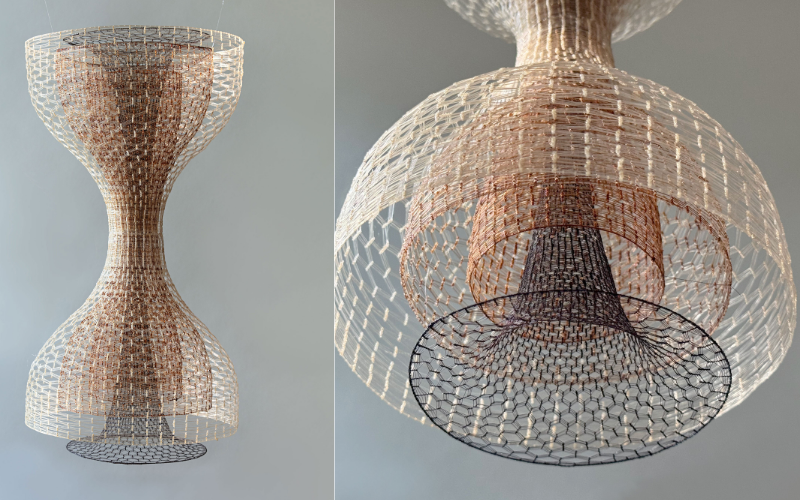- 한국어
- English
- 日本語
- 中文
- العربية
- Español
- Français
- Deutsch
- Pусский
- Tiếng Việt
- Indonesian
By Honorary Reporter Foteini Chatzoudi from Greece
Photos = Yoon Jayoung
Yoon Jayoung is a visual artist who uses natural materials such as human hair, feathers, milkweed seed fiber and horsehair. She incorporates traditional Korean techniques of horsehair weaving into her work for use on hats, belts and baskets.
She received last year the Joan Mitchell Fellowship, which recognizes and supports 15 U.S.-based artists in sculpture, art installation and painting. She has shown her work at numerous exhibitions including those at the Bronx Museum of the Arts in New York, Studio 3 Galleryz in England and B53 Gallery in the Netherlands.
Publications featuring her work include The New Yorker, Paris Review and Fiber Art. The following are excerpts from an email interview with Yoon from June 28 to July 9.

Yoon Jayoung at her studio
Growing up in Korea in the 1980s, I heard family stories about Japanese occupation, the Korean War and military regimes. I experienced the chaos of rushing home to avoid tear gas from military police during student protests. These experiences shaped my understanding of the human condition and led me to find ways to process suffering, cleanse memories and seek healing.
Why did you decide to learn traditional horsehair weaving techniques?
During my visit to Korea in 2019, I took a class to learn traditional embroidery at the Yongsan Art & Craft Center. There, I saw on display a tanggeon, a traditional hat made of horsehair, and was fascinated by its semi-transparent beauty and delicate structure, which resonated with my works.
I discovered that several masters designated Intangible Cultural Heritage still pass down such techniques. Last year, I went to Jeju Island and learned from a government-recognized "instructor for successor training" of tanggeon for a month. This experience gave me profound insights into these methods.
Give a brief overview of the horsehair weaving technique.
Wooden models are employed in interlacing strands of horsehair with a needle. After the weaving is done, the horsehair is put on the wooden form and immersed in boiling water from 30 minutes to two hours, depending on the intricacies of the techniques applied. This procedure solidifies the shape.

Yoon's "The Fabric of Energy" used horse and human hair created under the traditional weaving method.
What is the future of this craft?
I'm optimistic about the future of horsehair weaving. In this world of mass production, traditional handcrafted pieces offer a unique tactile experience and subtle characteristics that machines can't replicate. Over the past decade, I've noticed a significant increase in demand for artisanal skills, especially at craft fairs and on online marketplaces. People are rediscovering the value of handcrafted items.
What I find particularly meaningful is how this craft serves as a living link to Korean heritage. Passed down through generations, the intricate techniques are gaining appreciation in our globalized world. This craft's ability to connect us with history while offering something uniquely beautiful is the key to its lasting significance and impact.
msjeon22@korea.kr
*This article is written by a Korea.net Honorary Reporter. Our group of Honorary Reporters are from all around the world, and they share with Korea.net their love and passion for all things Korean.